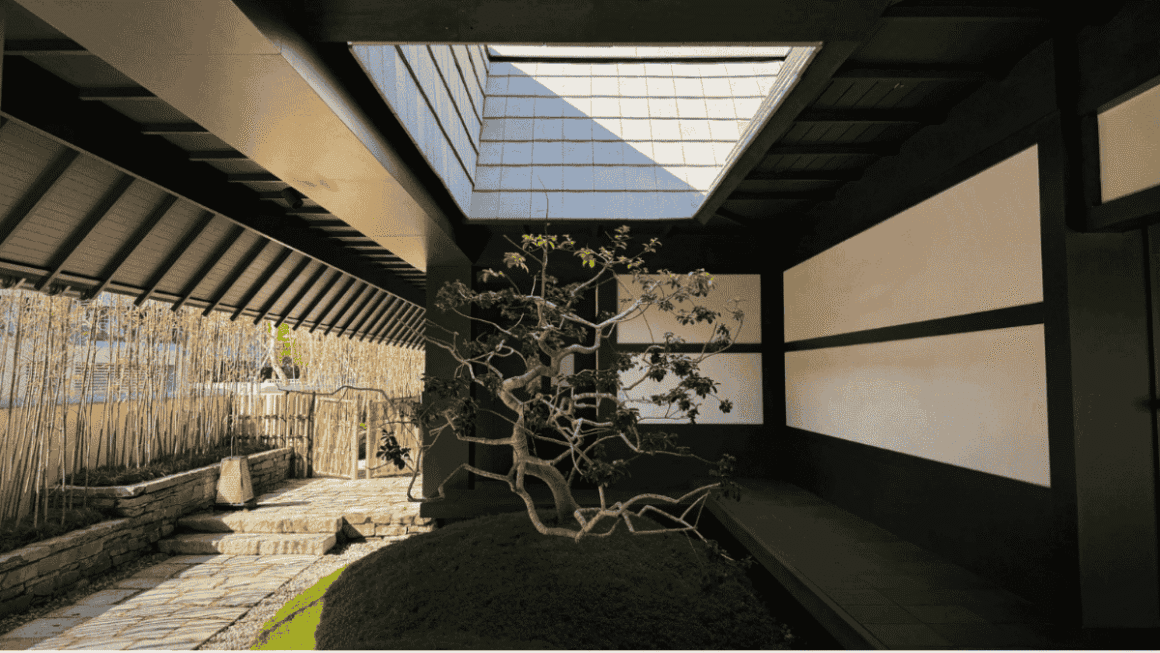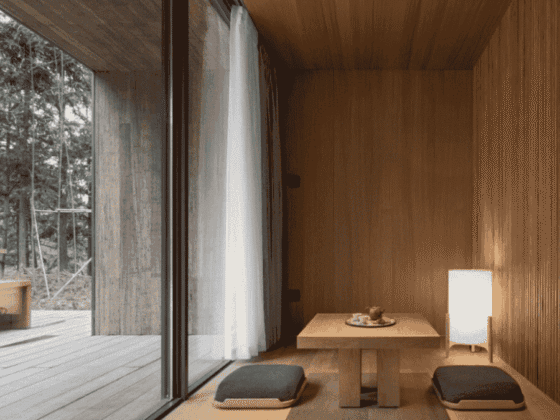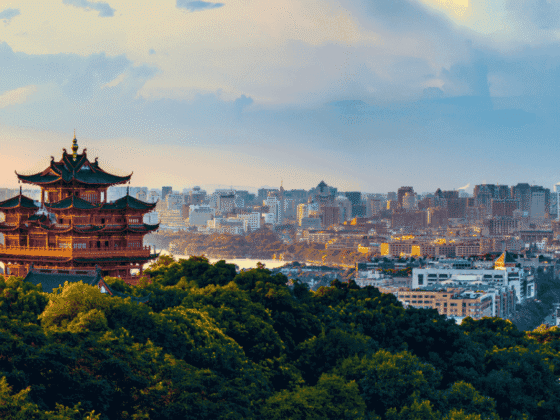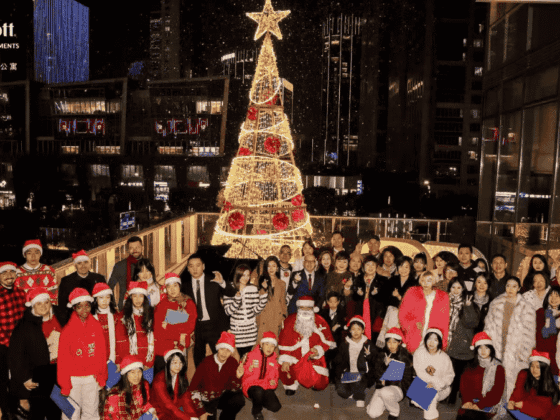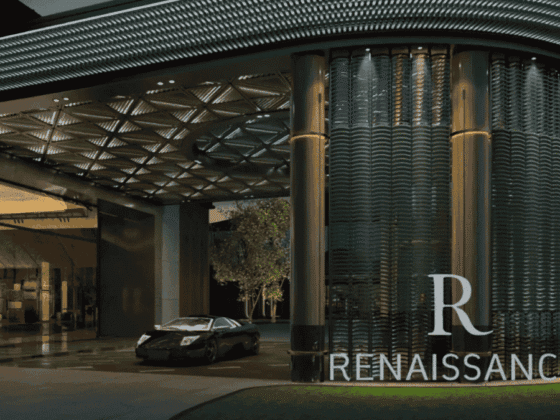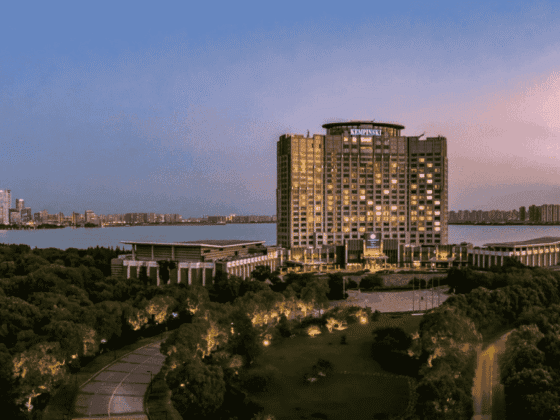
Dawn spills over the mist-clad peaks of Wuling Mountain, where a stream whispers through moss-cloaked stones. At the valley’s heart, a structure seems to rise organically from the earth—wooden eaves bowing low, shoji screens glowing amber, wind chimes trembling in solitude. This is Jianshan Benyuan (见山本院, “Seeing Mountains honin”) at Aranya·Wuling Mountain, a sanctuary where Zen philosophy is etched into every architectural detail. Meanwhile, 1,600 kilometers south in Sanya, a sister retreat reimagines tropical leisure through the lens of “Nine Mountains and Eight Seas Garden,” a concept that dissolves concrete into poetry beneath swaying bamboo.
WULING MOUNTAIN: A SONG DYNASTY DREAMSCAPE
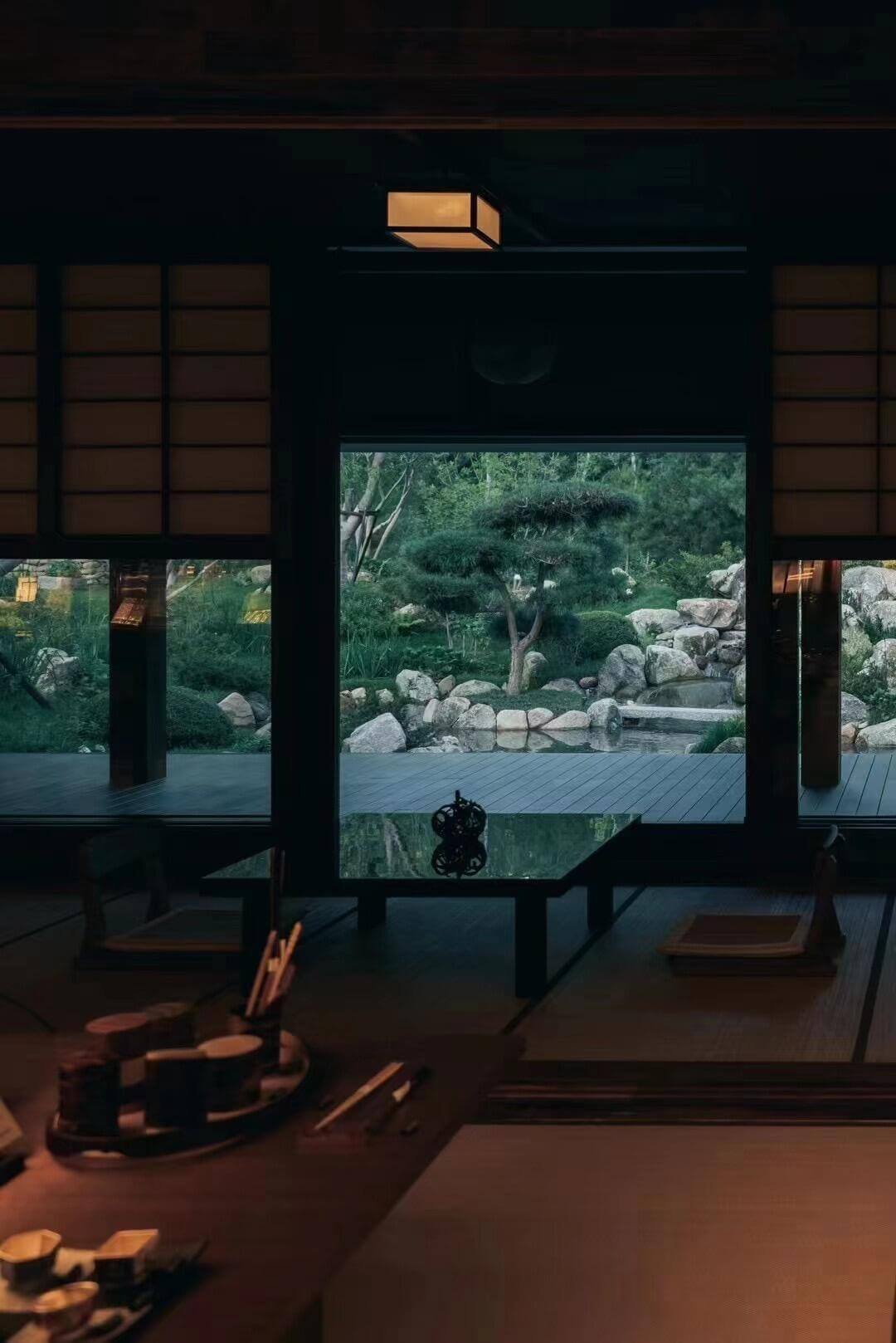
True tranquility lies in letting space become a medium between humanity and nature. At Wuling Mountain, this vision materializes.
The Space: A Dialogue with Song Dynasty Aesthetics
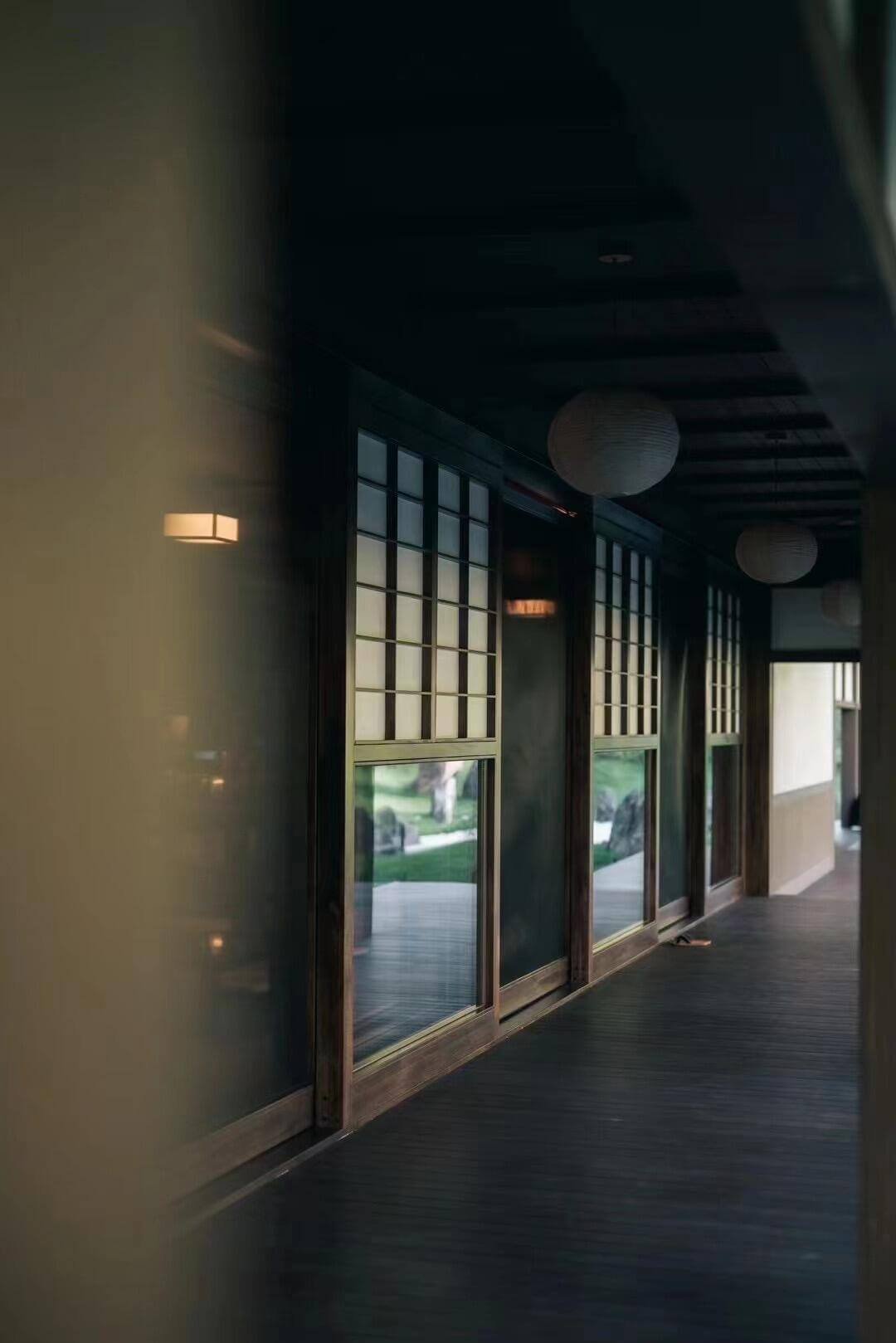
The retreat humbly embraces the riverside, its elongated rooflines and cross-shaped corridors guiding the eye through timber beams and paper lanterns. Every element—the warmth of nageshi pillars, the restraint of threshold borders, the dappled light from bamboo-edged skylights—pays homage to Song Dynasty minimalism. The pièce de résistance adjustable Song-style low windows: kneel to see a raked gravel garden unfurl like a scroll painting; stand to catch distant ridges crashing into view—a masterclass in “borrowed scenery.”
Reading: Encounters with the Rare
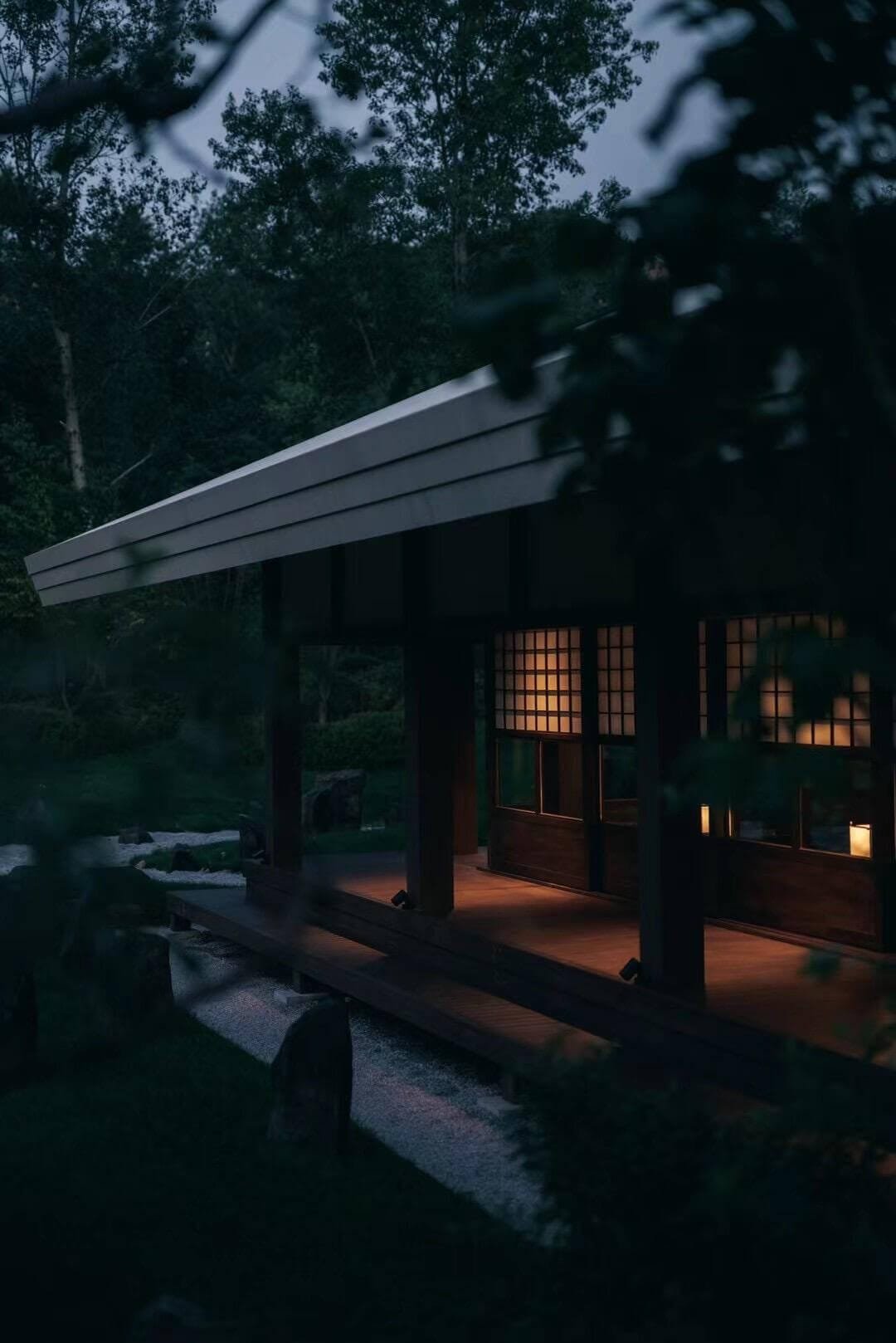
This is no Instagram-bait bookstore. Here, obscure architectural folios stand beside out-of-print literary gems, while Kyoto lacquerware awaits beside haiku collections. Grab Zen and the Art of Simple Living, settle onto a tatami mat by the koi pond window, and watch clouds shatter on the water’s surface. Is it the text illuminating the view, or the view annotating the text?
Garden: A Microcosm of Seasons
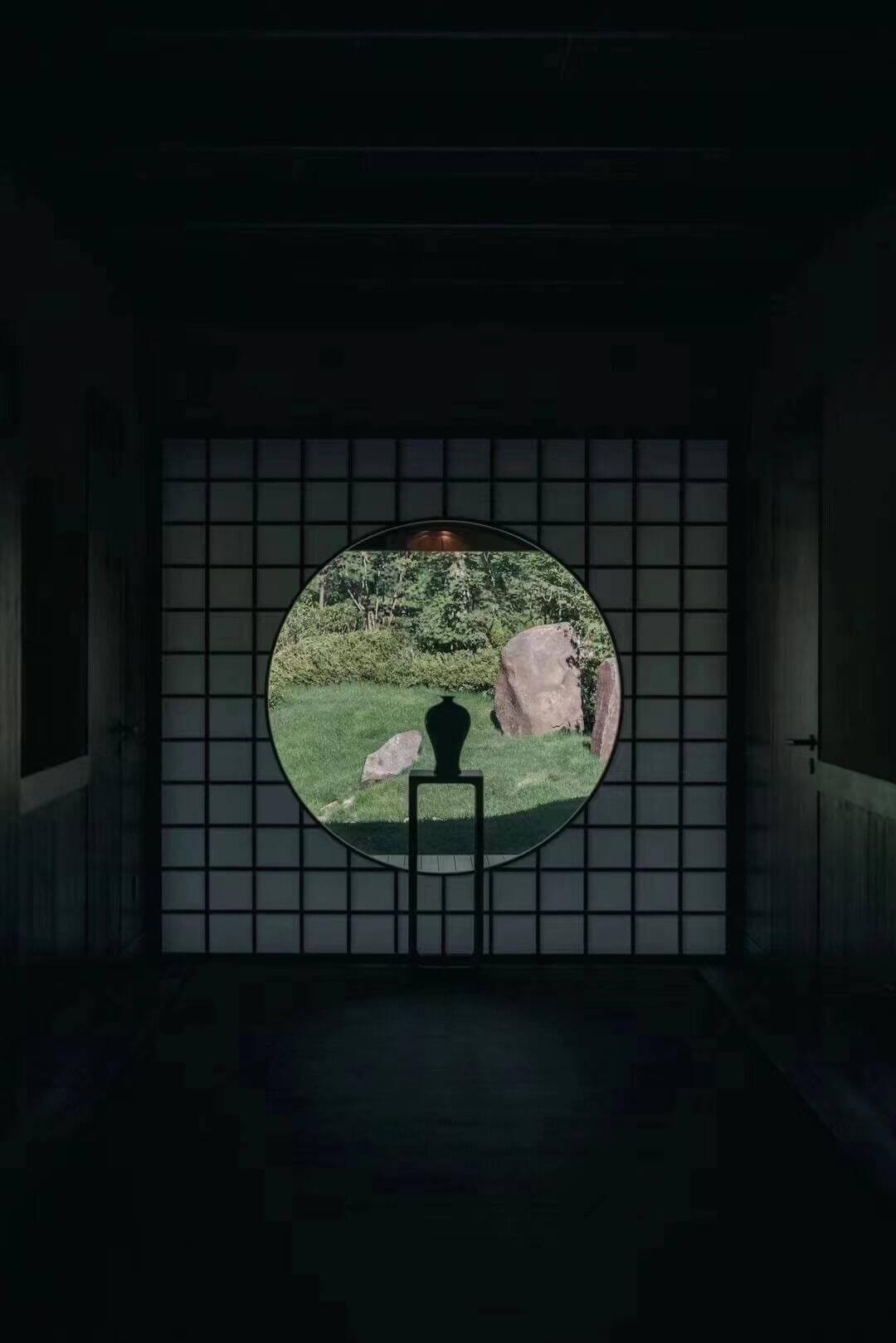
White sand becomes ocean, moss transforms into forest, and stones rise as mountains in this karesansui (dry landscape) garden. In spring, sip gyokuro tea under the yanxing eaves as Yoshino cherry blossoms drift like snow; by autumn, practice calligraphy with Wang Wei’s verses as maple leaves pirouette onto inkstones—a living ode to “Where the stream ends, I sit and watch clouds rise.”
Go Tip:
Shenshi Tea Ceremony (Daily 3–5 PM): Channel Song scholars, whisking matcha into froth as valley mist mirrors the tea’s foam.
Moonlight Sutra Transcription (Saturdays): Trace the Heart Sutra on gold-leaf paper by incense glow, the garden pond reflecting your brushstrokes.
Secret Library: Request the “Hidden Booklist” for access to Shōwa-era ukiyo-e archives.
SANYA: BAMBOO SHADOWS AND SEA WHISPERS
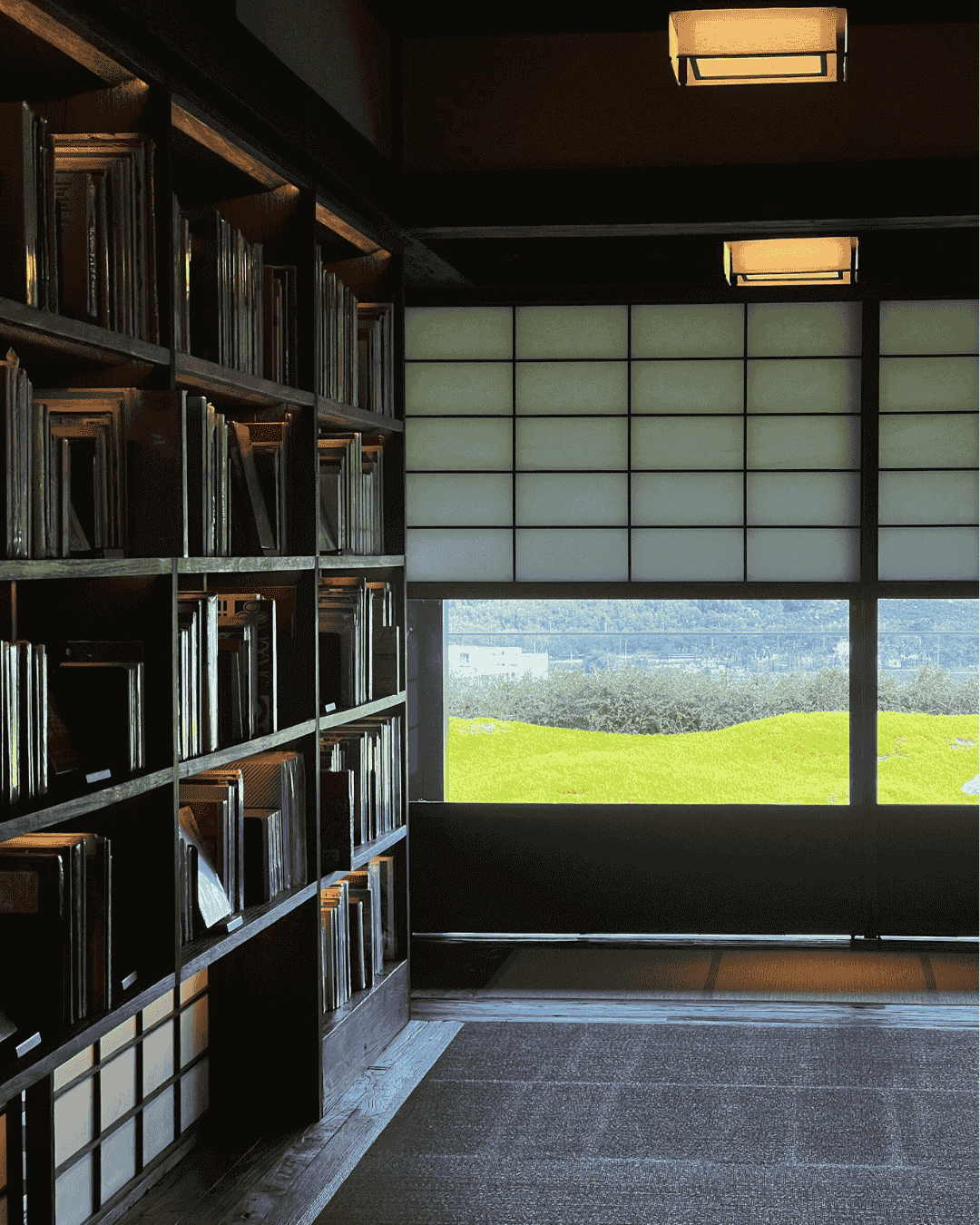
While northern peaks don winter’s first snow, Sanya’s Jianshan Benyuan blazes with flame tree blooms. Landscape maestro Yoshiki Toda conjures a “Nine Mountains and Eight Seas” realm where bamboo conquers concrete.
Design: A Theater of Light
15,000 bamboo tiles cascade across the roof, sunlight etching haiku through latticed screens. Don’t miss the suspended bamboo walkway: at 3 PM, shadows stretch like musical staves across warm planks—walk barefoot, and you’ll swear you’re stepping into a Miyazaki soundtrack rolling toward the South China Sea.
Handmade: Craft Dialogues
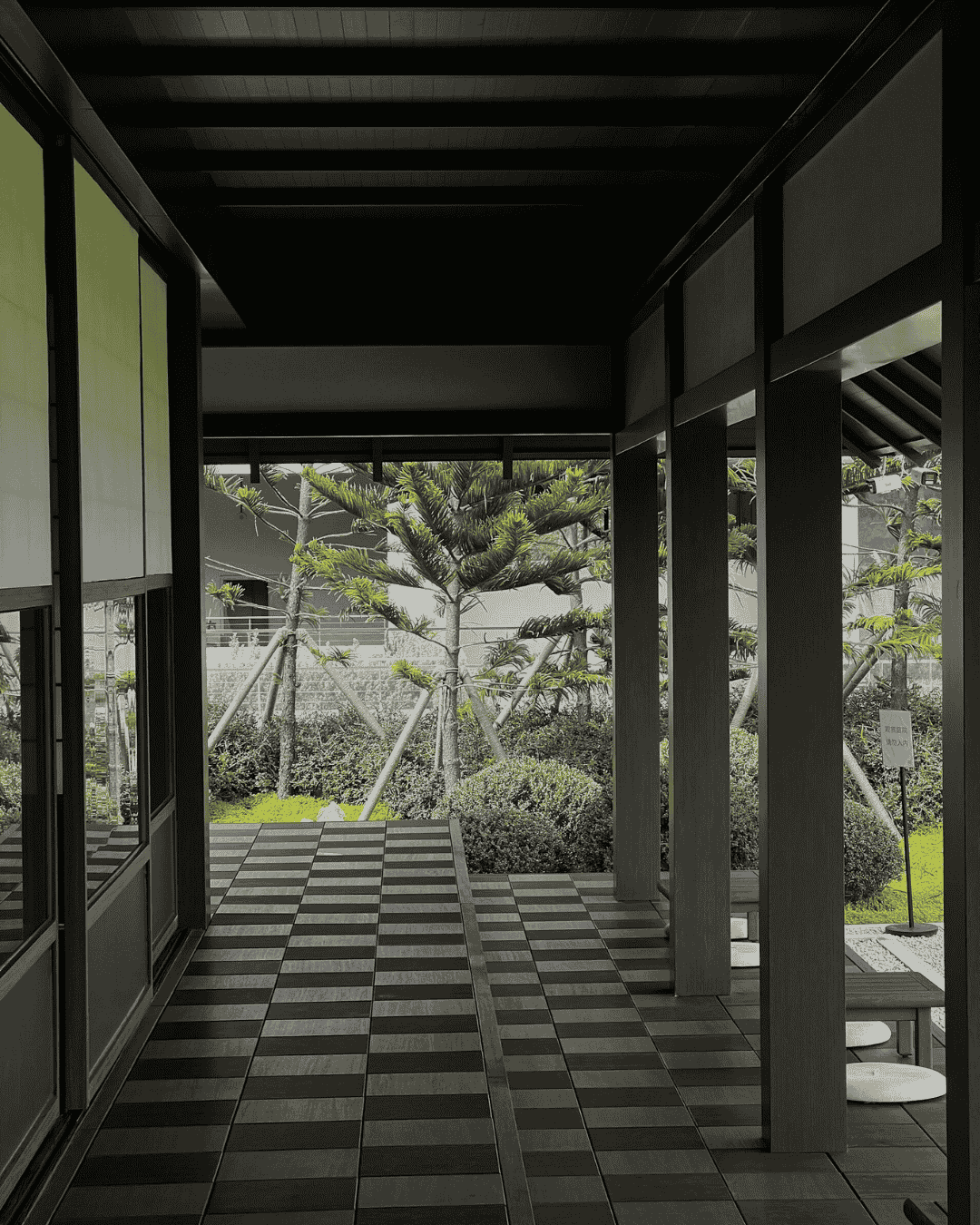
A clandestine gallery pairs Li tribe handwoven skirts (from Wuzhi Mountain artisans) with Kyoto’s 150-year-old Hakuichi gold-leaf decanters. Sip local zhegu tea from Okinawan glassware etched with wave patterns—where tradition and modernity waltz in bamboo-scented air.
Rituals: A Tropical Trilogy
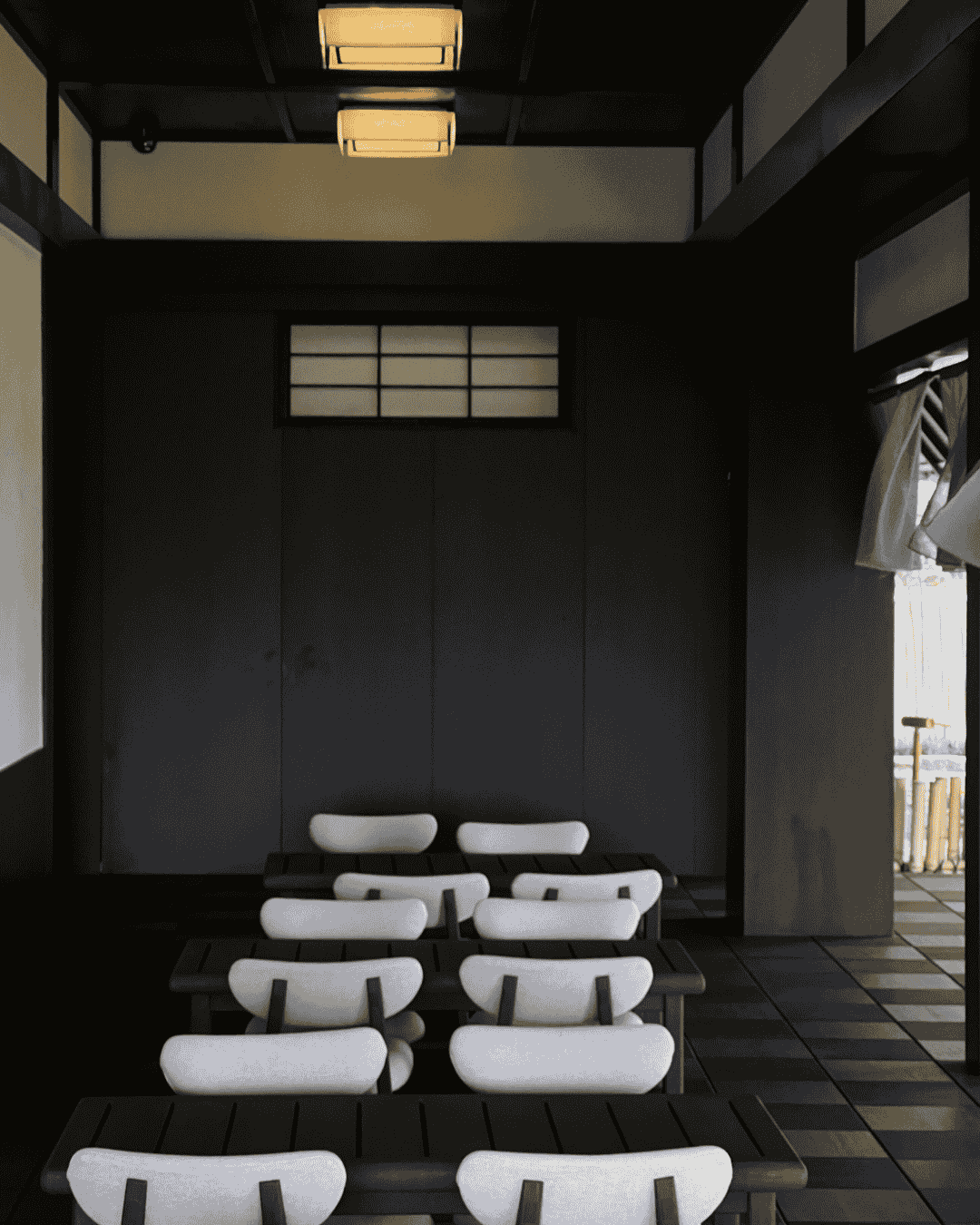
Dawn Calligraphy: Dip a deer-hair brush into gold ink to transcribe The Blue Cliff Record, with koi carp as your audience.
Agarwood Afternoons: Sip “South Sea” coffee—infused with Hainan agarwood and coconut milk—paired with Tanizaki’s In Praise of Shadows.
Sunset Verses: As movable shelves part, Okinawan sanshin melodies entwine with Neruda’s love poems under fairy lights.
Go Tip:
Bamboo Lantern Nights (Fridays 7:30 PM): Wander with washi lanterns, learning tropical ferns’ Latin names from the head gardener.
Poetry Drift: Leave handwritten verses on shelves—they might become another traveler’s serendipitous gift.
PHILOSOPHY: FROM “ICHIGO ICHIE” TO “EVERY DAY IS A GOOD DAY”
Though separated by latitude, both retreats share a Zen core: Wuling’s gravel gardens and Sanya’s bamboo groves whisper the same truth—mountains are mountains again.
Devotees pilgrimage seasonally: April brings cherry blossoms dusting Wuling’s inkstones; October summons bamboo rustling in sync with Sanya’s page turns—a year-round odyssey through Eastern aesthetics.
Venue Informations
📍Aranya Wuling Mountain, Chengde, Hebei
🎫¥160 (includes specialty tea)
📅Prime time: 10 AM–12 PM (when mist veils the garden)
📍Aranya Community Center, Sanya
🎫¥60 (redeemable)
📅Golden hour: 4–6 PM (bamboo shadows at their most photogenic)
*Silent Days: Wuling (Wednesdays) and Sanya (Tuesdays) restrict entry to pre-booked guests.
*Seasonal Perks: Handmade kotatsu tables warm Wuling winters; Sanya summers feature coconut cold brews.
Epilogue
At Jianshan Benyuan, reading transcends words. When fingertips graze Kyoto’s karakami paper, when bamboo breezes flip a page of the Man’yōshū, when raked stones align with distant peaks in divine geometry—we realize travel is but a mirror held to the soul’s hidden contours.
